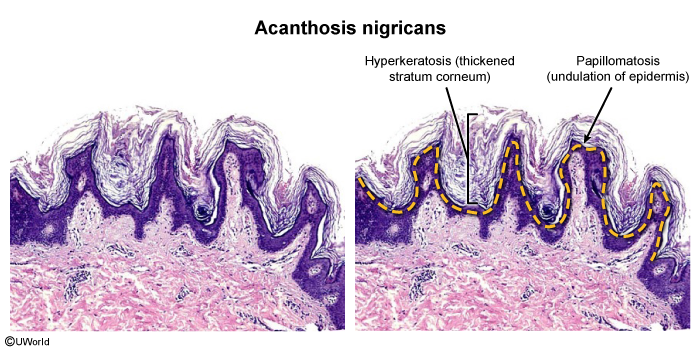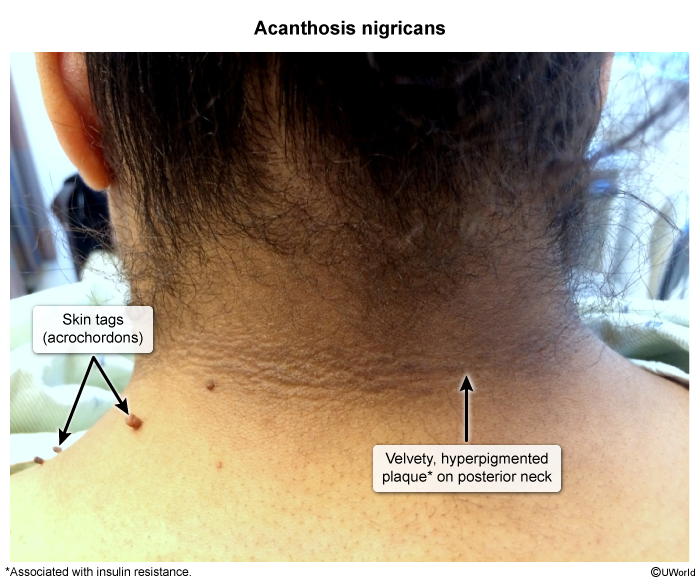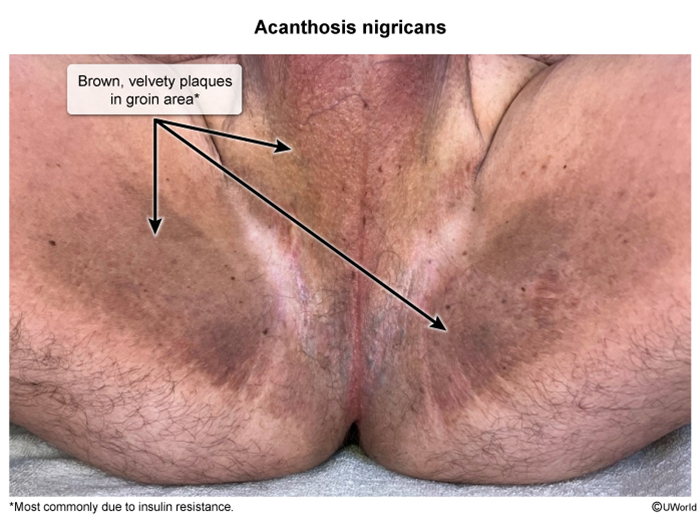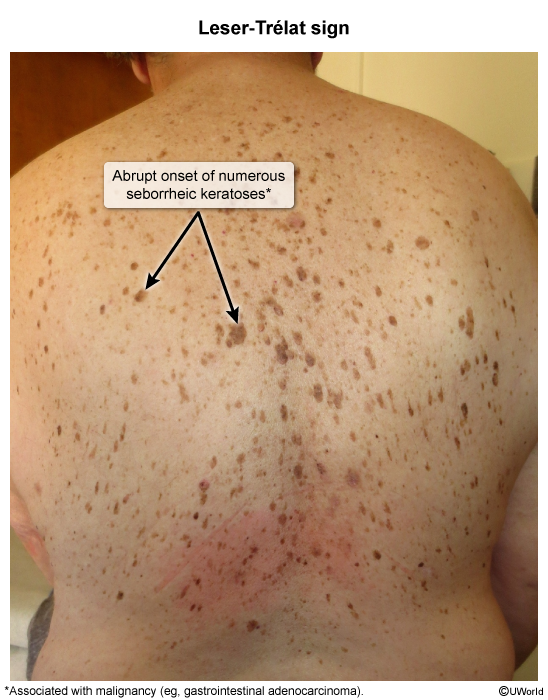Acanthosis Nigricans
Article Sections
Introduction
Acanthosis nigricans (AN) is a dermatologic condition characterized by hyperpigmented, velvety plaques, most commonly occurring in intertriginous areas. It is most often associated with insulin resistance but may also be linked to malignancy.
Pathophysiology
The exact mechanism underlying AN is not fully understood, but it is thought to result from keratinocyte and dermal fibroblast proliferation caused by increased activation of growth factor pathways. Insulin resistance plays a central role because hyperinsulinemia stimulates keratinocyte and fibroblast proliferation via insulin-like growth factor-1 (IGF-1) receptors. In malignancy-associated cases, tumor-secreted transforming growth factor-alpha (TGF-α) may induce similar epidermal hyperplasia.
Etiologies
AN may result from either benign or malignant causes. Benign causes can be acquired or inherited.
Benign causes- Obesity and/or metabolic/endocrine disorders
Continue Learning with UWorld
Get the full Acanthosis Nigricans article plus rich visuals, real-world cases, and in-depth insights from medical experts, all available through the UWorld Medical Library.
Figures
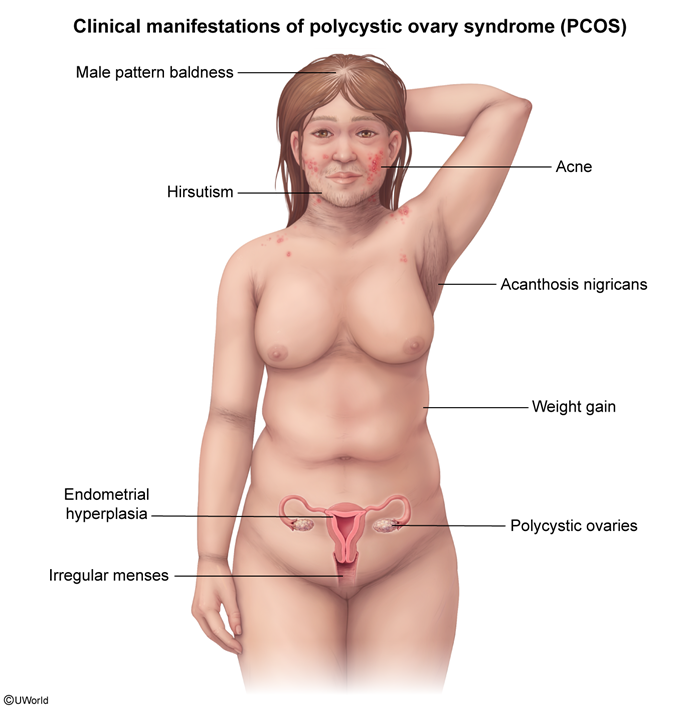
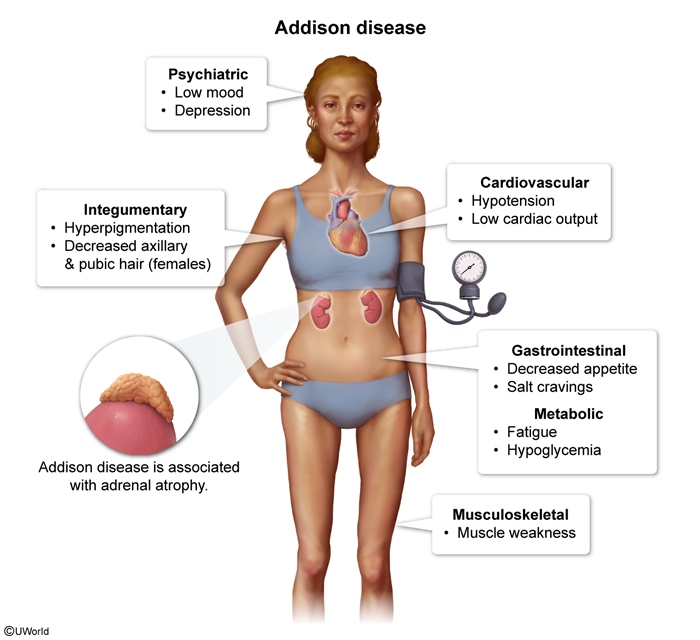
Images
